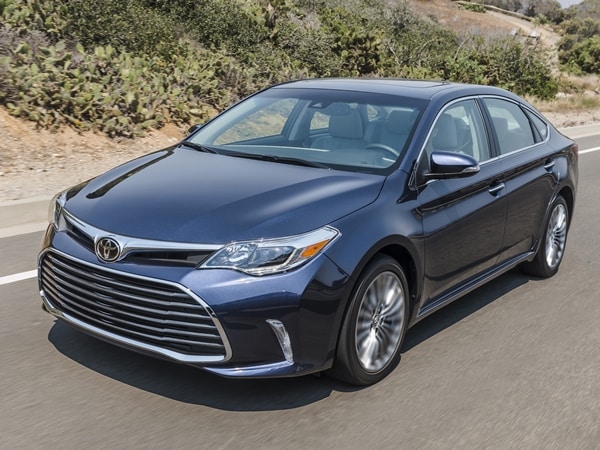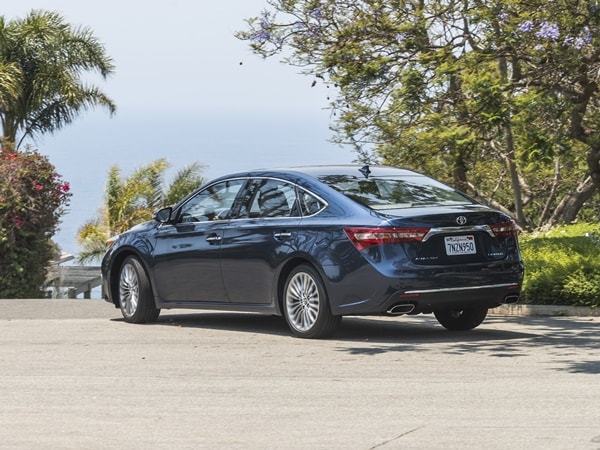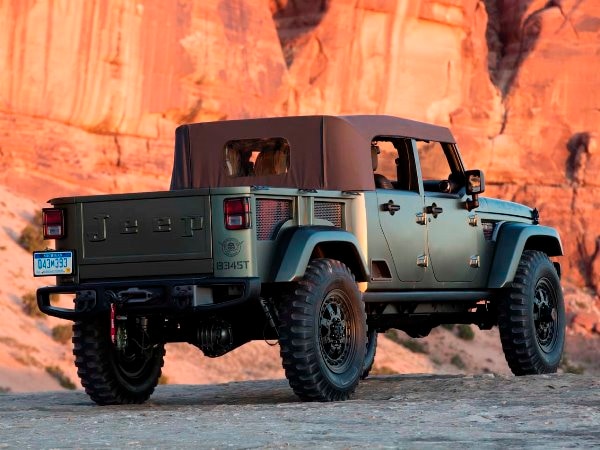
As 2017 gets underway, car buyers will be seeing fewer large scale sales events and more selective incentives as manufacturers look to balance inventories by strategically placing spiffs on slower selling products. A case in point is Toyota’s $4,000 rebate on 2016 Avalon models, a reaction no doubt to sluggish sales of the sedan, which dropped 20 percent last year.
Look for more rebates on midsize sedans as well. That segment is off more than 12 percent, while expecting fewer deals on crossovers, which saw their popularity rise by 8.5 percent to top 5.6 million units.
This uneven nature of the market, with strong demand for crossover SUVs and trucks offset by weakness in formerly powerhouse segments like midsize cars, presents a unique set of challenges. Auto makers must strike a balance between reining in production and seeing margins erode as they offer large incentives to clear out stocks of slow-moving vehicles that they continue to build.

This environment has one executive concerned about the possibility of higher fleet deliveries and huge incentives returning if the industry decides to continue to build cars at a record pace. John Mendel, executive vice president of American Honda, feels a lack of discipline on production, incentives and fleet sales could adversely affect the kind of profitability expected when times are as good as they are.
“How is it that at such a high point, so many in the industry, including dealers, are struggling for profits, if not survival?” Mendel asked during a presentation to the Automotive News World Congress in Detroit. “These trends are a problem for the whole industry.”
An increase in low-margin fleet deliveries, long-term loans that keep return buyers out of the market for extended periods, subprime loans given to risky borrowers and big rebates may push up volume, but only temporarily and at a huge cost. While industry incentives are up nearly 15 percent, Mendel said Honda has actually pulled back on its spending by 12 percent, concentrating on higher profit retail sales in lieu of volume-padding fleet deliveries.
“As we’re creating more and more content, better vehicles, safer, more connected, we’re spinning people out further and further away from being able to afford them,” he said. Mendel predicted that if overall volume softens from the current 17-plus million to 15 or 16 million, the pressure on the profitability of those sales will increase dramatically. “It takes real conviction at the highest levels of the organization to pass on a short-term opportunity that doesn’t fit your long-term strategy and is not in the best interests of your company, your dealers or your customers.”
Upside in sales seen
Even as Mendel sounded warnings about a potential softening in the market, some analysts believe that the industry could set another sales record of 18 million units either this year or next. John Murphy, an analyst of Bank of America Merrill Lynch told the same industry conference that the market could peak at that level before falling to about 14 million in the early 2020s.
“This is the time to start preparing for the tough times, even though we think they’ll be pretty good for the next couple of years,” Murphy observed. He is more bullish than others who see sales plateauing or falling in 2017-18. Regardless, Murphy also believes that the industry is better positioned to weather low volumes. “We see a lot of discipline in place with the auto makers; that is not necessarily what we saw in the 2001-2007 period when we last plateaued.”
That doesn’t mean all competitors will have an easy time. He singled out Fiat Chrysler Automobiles in particular because of its $5 billion debt. “Given the position they’re starting from and where we expect the cycle to go, we do think they’re going to have a tough time,” he said.
Also: Kelley Blue Book Best Buy Awards of 2017
CPO buyers loyal
Dealers have discovered that Certified Pre-Owned cars are a good substitute for new car sales, especially in an environment of ever-increasing transaction prices. And now they’ve discovered another benefit: owner loyalty. Experian Automotive has released a study showing that CPO buyers have a 75-percent brand loyalty rate in buying another used car, which tops the rate of new car or non-CPO buyers.
“Over the last few quarters, our analysis shows that pre-owned vehicle purchases are on the rise and becoming more and more popular among consumers across all credit risk tiers,” said Brad Smith, Experian director of automotive data and analytics. “By understanding these loyalty rates, manufacturers, dealers and resellers are able to make smart decisions that create more opportunities for themselves and in-market customers.”
Contributing to this trend is the number of high-quality late-model used cars dealers are bringing in off-lease into their certified programs. The high satisfaction with these vehicles leads to repeat CPO sales.
“Auto manufacturers continue to increase sales through higher rates of lease penetration, then channel these off-lease vehicles into certified pre-owned fleets,” Smith said. “In essence, they are controlling both supply and demand of their off-lease used vehicles and building an amazing loyal customer base.” He said the 75 percent owner loyalty rate is seconded only by new car buyers who return at a 61-percent rate. By make, the highest CPO loyalty rate was posted by Ford at 85 percent, followed by Mercedes-Benz at 83 percent and Honda and Toyota, which had identical 82-percent return rates.
Jeep pickup, large SUVs coming
FCA has confirmed plans for a Jeep pickup truck based on its popular Wrangler 4-door SUV, as well as full-size Wagoneer and Grand Wagoneer SUVs. The announcement was made as part of a commitment to invest $1 billion in U.S. manufacturing facilities in Michigan and Ohio.
The Wrangler-based pickup will be built at the Jeep factory in Toledo, Ohio, while the new body-on-frame Wagoneer and Grand Wagoneer will be built at the Warren Truck Assembly Plant outside Detroit. While the Jeep pickup had always been planned on the Wrangler chassis, the shift to body-on-frame construction and the addition of a Wagoneer to the plan for a full-size Grand Wagoneer is a recent development, according to Mike Manley, head of Jeep and Ram. Originally, the Grand Wagoneer was envisioned as a long-wheelbase variant of the existing Grand Cherokee, but that idea was scrapped in favor of the two full-size SUV approach of a standard wheelbase Wagoneer and long-wheelbase Grand Wagoneer. That way these models will better match intended rivals like the Chevrolet Tahoe/Suburban and Ford Expedition/Expedition XL. All three new Jeeps are expected to be launched sometime during the 2020 calendar year.
The rundown
Check out the This Week in Car Buying Podcast here.
Among the new models waiting in the wings are a 2018 Toyota Camry, Honda Odyssey and Chevrolet Traverse, all of which are included in our coverage of the North American International Auto Show.
Honda is planning an all-new dedicated hybrid, which would be the successor to the discontinued Insight. The powertrain for the new model will come from the 2017 Honda Accord Hybrid.
A hotter version of Jaguar’s flagship 2-seat sports car is on its way. The British auto maker has announced the 2018 Jaguar F-Type 400 Sport Launch Edition will soon bow.
In the market for a new car? Explore these useful tips on how to get the best deal:
Kelley Blue Book’s Complete Guide to Incentives
All you need to know about leasing
Which dealer services are right for you?
What to look for in your next economy car








